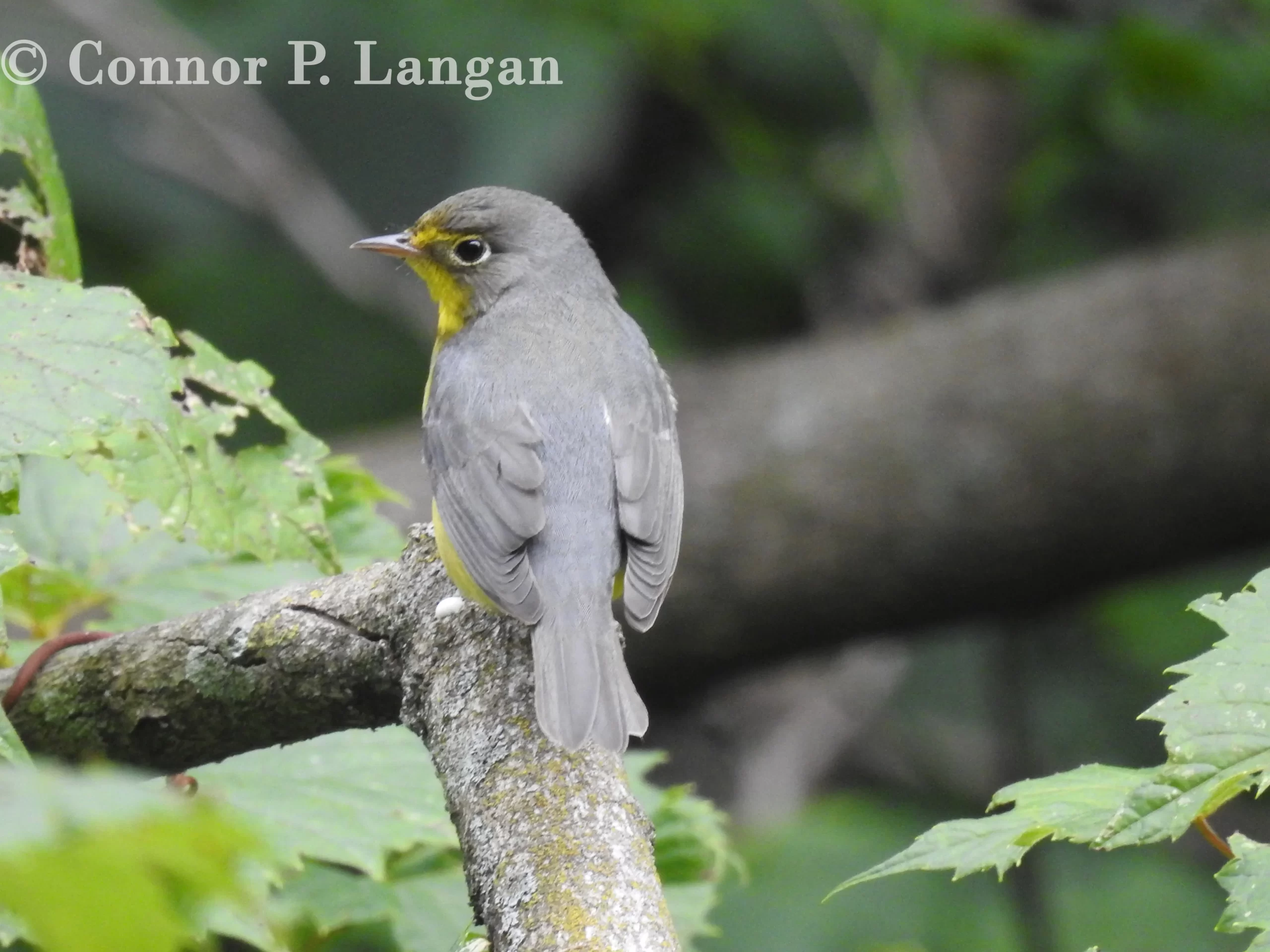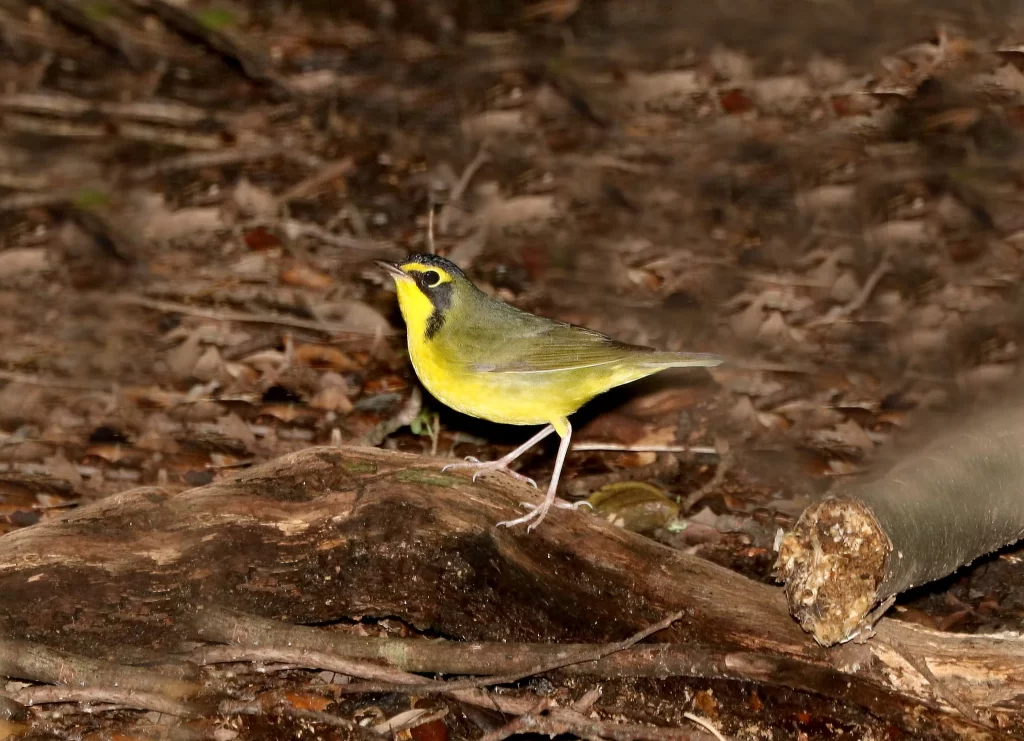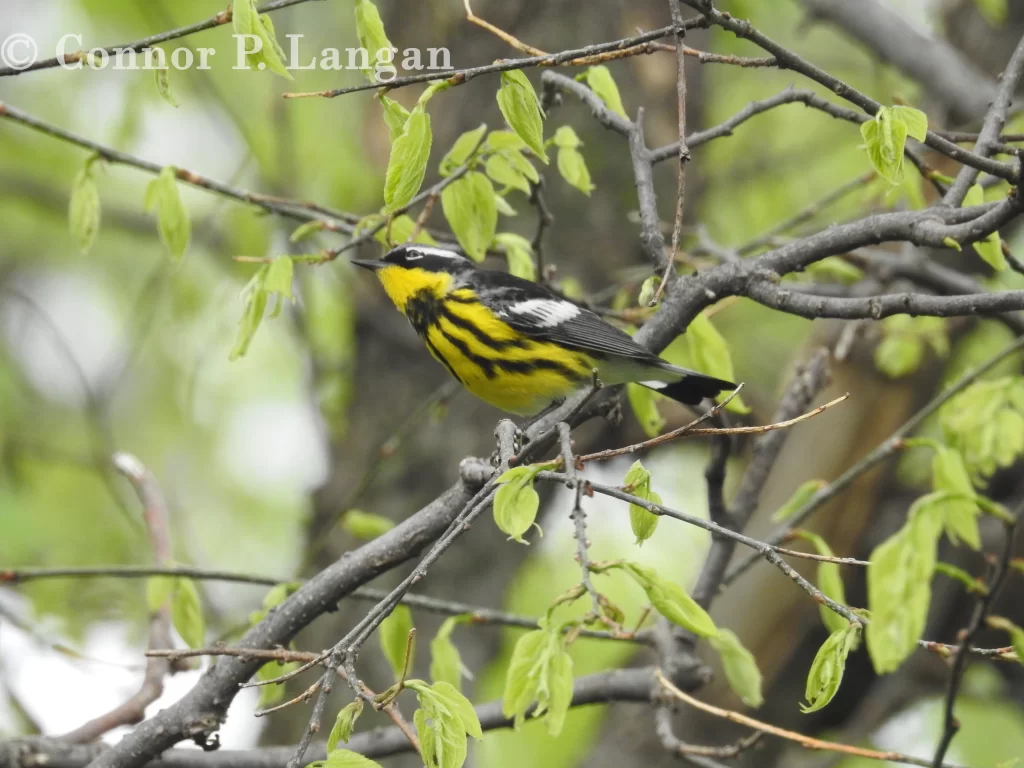Description
Canada Warblers have even proportions save for their tails, which are long for a warbler. These birds have round heads and short, fairly thick beaks.
Canada Warblers are large for warblers, measuring up to 6 inches long. These birds weigh 0.3 to 0.5 ounces.
Male Canada Warblers are yellow below and slate gray above. Males have a pale eyering, white undertail coverts, a gray tail, and characteristic black streaking on their chests. Some suggest that the black streaking on their chests makes it look as though they’re wearing a necklace.
Female Canada Warblers look similar to males-they have pale gray backs and yellow undersides that have minimal black streaking. Females have bold eyerings and a small amount of black in front of their eyes.
Immature female Canada Warblers have the plainest plumage exhibited by this species. They have no black on their face and faint markings on their chests. Their bold eye rings are prominent characteristics.
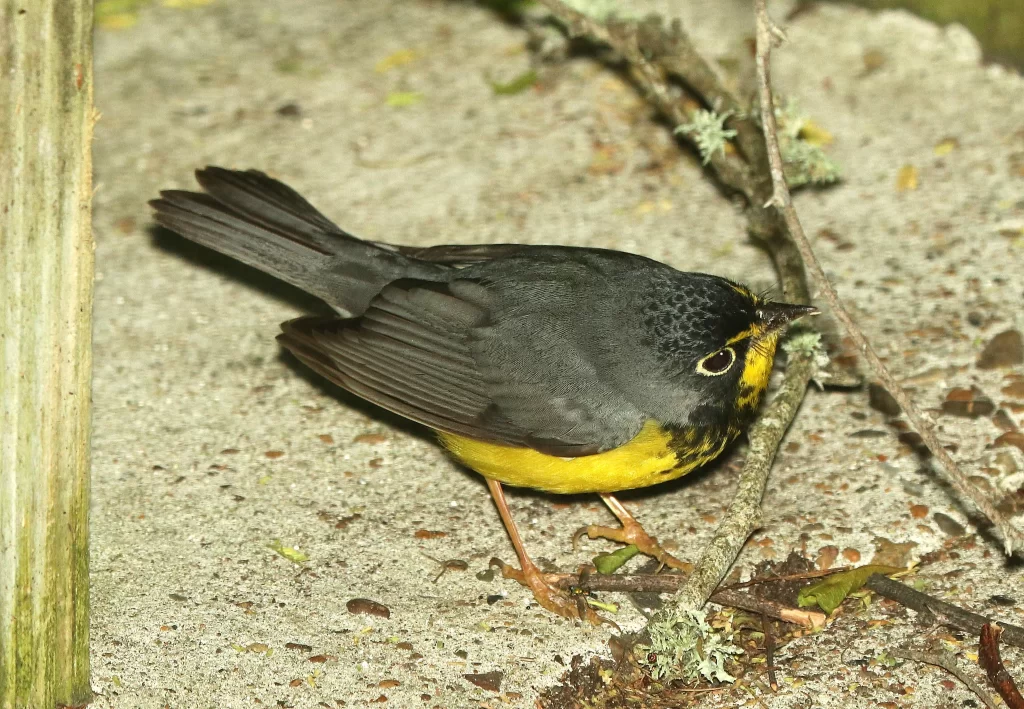
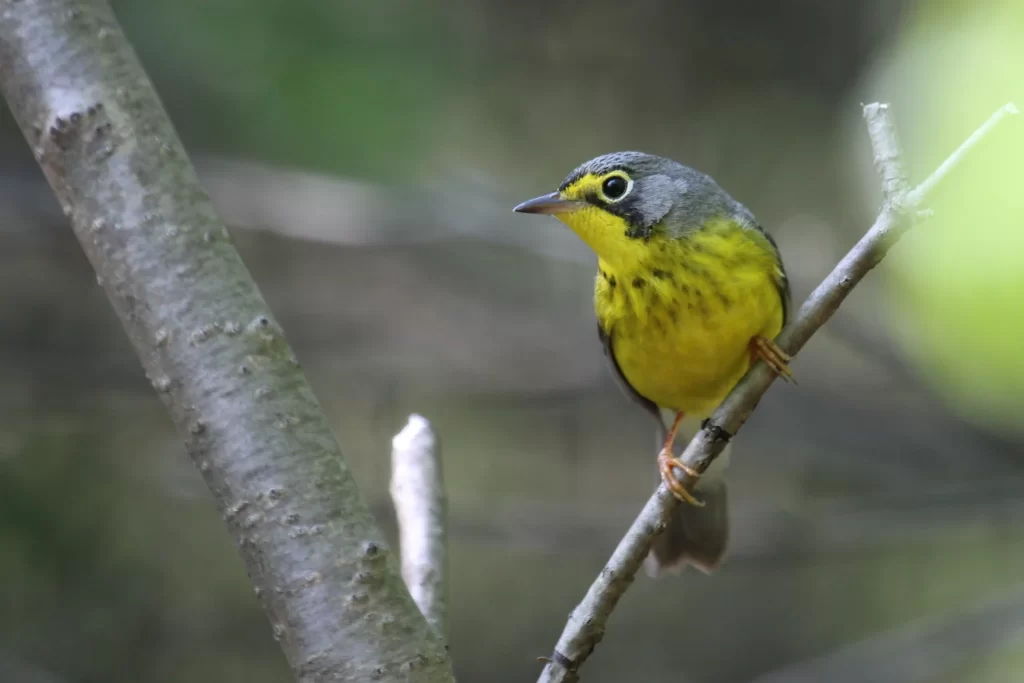
Behavior
Canada Warblers forage by themselves or near their mate on their breeding grounds, but they become more sociable during the nonbreeding season, as they loosely forage with other passerine species.
Canada Warblers keep a low profile, avoiding disturbances whenever possible.
Diet
Canada Warblers are insectivorous, consuming substantial amounts of invertebrates such as ants, spiders, caterpillars, and slugs.
Habitat
Canada Warblers seek out forested habitats that are often located near water for breeding. They often nest in mixed forests, but they may breed in predominantly deciduous or coniferous forests. Canada Warblers may also breed in forested wetlands.
Canada Warblers can appear anywhere with a decent amount of trees during migration, being found in parks, forests, and backyards.
During winter, they seek out tropical forests with plenty of shrubs or young trees in the understory, though they can also be found in plantations for coffee or cacao.
Range
Canada Warblers breed in the northern United States east of the Great Plains and into the boreal forests of Canada. These birds also breed in the Appalachian Mountains, breeding as far south as Georgia.
Canada Warblers are one of the last warblers to show up during spring migration and perhaps the earliest warbler to depart in the fall.
These birds winter in Central America and South America down to southern Peru.
Breeding
Canada Warblers are monogamous by nature, though that will not stop them from seeking extra-pair copulations when presented with the opportunity.
Female Canada Warblers construct the nest by themselves. They seek a location on or slightly above the ground where they have plenty of cover for their nest.
Females make a cup-shaped nest from leaves, lichens, grasses, and plant fibers. The interior of the nest is padded with soft materials like feathers, mammal hair, and moss.
Given the brief interval in which Canada Warblers are on their breeding grounds, these birds typically have a single brood each year. Anywhere from two to six eggs are laid in a clutch, and it takes around twelve days for the eggs to hatch. Nestlings grow quickly, leaving after just over one week.
Backyard Birding
Considering their insectivorous nature, Canada Warblers do not visit bird feeders. These warblers are not cavity nesters, so they will not construct a nest in a birdhouse.
Canada Warblers may visit bird baths that are surrounded by the cover of shrubs and grasses. Landowners who hope to attract Canada Warblers will want a good mix of trees and shrubs on their properties.
Population Status
Canada Warblers are considered an uncommon species of warbler. Though their global population is estimated to be around 3 million birds, their total population has declined by over 60% in the last fifty years.

